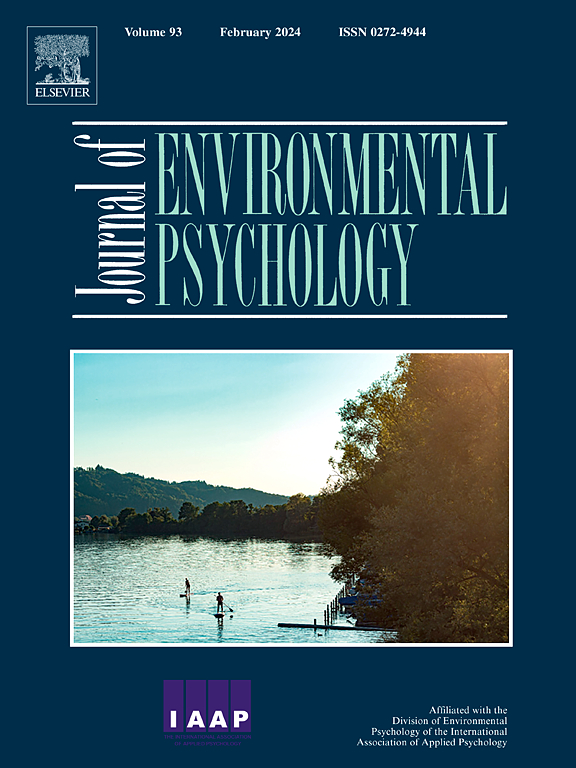Intrinsic functional connectivity correlates of pro-environmentalism
IF 6.1
1区 心理学
Q1 ENVIRONMENTAL STUDIES
引用次数: 0
Abstract
Climate change is a global issue facing humanity in real time. Understanding the neurocognitive mechanisms of individuals engaging in environmentally sustainable behavior may help to mitigate this mounting issue. Various brain mechanisms have been implicated in pro-environmental behavior, including sustainability-related decision making and prospective consideration of sustainable behaviors. These neural mechanisms appear to include brain networks involved in cognitive control, emotion/salience, and default mode processing. However, the relationship between environmental attitudes, a precursor to pro-environmental behavior, and the intrinsic functional connectivity of these networks has yet to be assessed. We collected resting state functional magnetic resonance imaging data to explore the baseline patterns of neural connectivity that relate to pro-environmental attitudes. Our results identified two patterns of functional connectivity linked to pro-environmental attitudes: 1) greater connectivity across brain networks involved in cognitive control and salience detection processes and 2) weaker connectivity within a brain network involved in cognitive control. Subsequent analyses indicate that these patterns of greater cross network and weaker within network connectivity independently contribute variance to individual differences in pro-environmental attitudes and—via this pathway—are indirectly related to levels of self-reported engagement in climate action. Thus, various patterns of intrinsic baseline functional connectivity of networks involved in salience-related and goal-directed processing relate to pro-environmentalism.
求助全文
约1分钟内获得全文
求助全文
来源期刊

Journal of Environmental Psychology
Multiple-
CiteScore
10.60
自引率
8.70%
发文量
140
审稿时长
62 days
期刊介绍:
The Journal of Environmental Psychology is the premier journal in the field, serving individuals in a wide range of disciplines who have an interest in the scientific study of the transactions and interrelationships between people and their surroundings (including built, social, natural and virtual environments, the use and abuse of nature and natural resources, and sustainability-related behavior). The journal publishes internationally contributed empirical studies and reviews of research on these topics that advance new insights. As an important forum for the field, the journal publishes some of the most influential papers in the discipline that reflect the scientific development of environmental psychology. Contributions on theoretical, methodological, and practical aspects of all human-environment interactions are welcome, along with innovative or interdisciplinary approaches that have a psychological emphasis. Research areas include: •Psychological and behavioral aspects of people and nature •Cognitive mapping, spatial cognition and wayfinding •Ecological consequences of human actions •Theories of place, place attachment, and place identity •Environmental risks and hazards: perception, behavior, and management •Perception and evaluation of buildings and natural landscapes •Effects of physical and natural settings on human cognition and health •Theories of proenvironmental behavior, norms, attitudes, and personality •Psychology of sustainability and climate change •Psychological aspects of resource management and crises •Social use of space: crowding, privacy, territoriality, personal space •Design of, and experiences related to, the physical aspects of workplaces, schools, residences, public buildings and public space
 求助内容:
求助内容: 应助结果提醒方式:
应助结果提醒方式:


